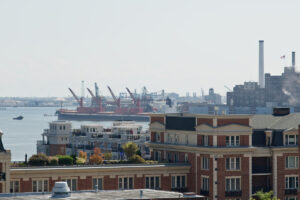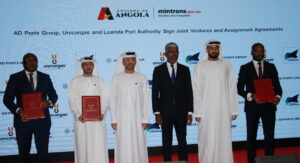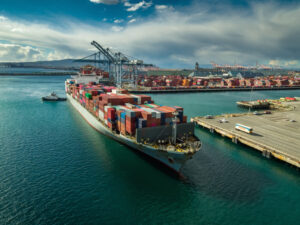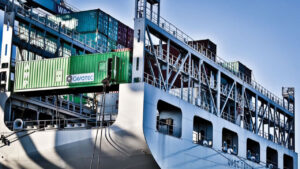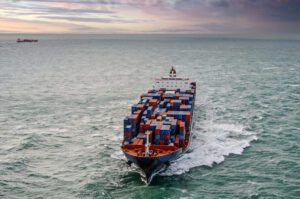Danny Wan, Executive Director for the Port of Oakland, has presented his five-point plan to mitigate congestion along the US West Coast to state policymakers.
Port directors from across California recently met virtually with state policymakers for Ports Day 2022.
California Lieutenant Governor Eleni Kounalakis, State Controller Betty T. Yee, Acting Secretary of the California State Transportation Agency Elissa Konove, and Senator Lena Gonzalez were just some of the officials in attendance.
“California ports have already taken action to address the pressing challenges facing our supply chain,” said Lieutenant Governor Kounalakis in her remarks.
“I applaud Governor Newsom for making this issue a priority in his proposed budget, which includes a proposed $2.3 billion for supply chain investments.
“These funds will help get goods moving by enhancing port infrastructure, zero-emission equipment, workforce training, programs and increasing capacity for commercial drivers’ licenses.”
During the meeting, Wan, who also acts as the President of the California Association of Port Authorities (CAPA), outlined his ideas on how to relieve congestion and bottlenecks along the US West Coast.
“California lawmakers must take a holistic approach to address the global supply chain crisis. We must increase investments in infrastructure, relieve dock congestion, support agriculture exports, and continue to advocate for enhanced federal funding for our ports.”
The Executive Director’s five-point plan is as follows:
- California Office of Freight: Establish the Office of Freight with a designated Supply Chain Coordinator to work with the goods movement industry to create and implement a state freight and goods movement policy and manage the roll-out of Federal infrastructure investments. The Office of Freight will serve to coordinate policy and budgetary development to ensure economic competitiveness, strengthen resilience, and advance California’s environmental leadership as it relates to the freight sector.
- Greater Investments in Infrastructure: Increase investment in California’s freight and goods movement transportation infrastructure across the board. This includes investments for port-related projects that increase goods movement capacity on rail and roadways serving ports and at port terminals, including railyard expansions, new bridges, and zero-emission modernization projects.
- Support Agriculture Exports: Provide support to agricultural exporters to help them find equipment and transportation services in the face of higher demand and costs.
- Relieve Dock Congestion: Locate and permit off-terminal staging areas where empty containers can be removed from chassis and temporarily stored to relieve congestion and away from the dock to allow ships to be processed faster.
- Enhanced Federal Funding for CA Ports: Advocate for the West Coast’s fair share of federal transportation and freight infrastructure dollars – which have historically been focused away from its largest port complexes in California.
In November 2021, a study commissioned by ports in Washington and California and conducted by the Northwest Seaport Alliance revealed that ports in Canada have received more than twice the amount of federal funding than US West Coast ports.
PTI recently found that congestion along the West Coast is slowly improving as the vessel backlog outside the San Pedro Bay has started to ease.
According to a report, a total of 77 vessels were waiting to berth outside the Ports of Los Angeles and Long Beach on 10 February, down 12 ships compared to the previous update on 7 February.
The problem concerning long-dwelling containers on the docks of the twin ports is also showing improvement.
In a social media post, shipping expert Lars Jensen said the Port of Los Angeles has recently seen a 77 per cent reduction of containers dwelling nine days or more since October 2021. The Port of Long Beach has also seen a corresponding 56 per cent reduction.
This explains the further delay of the “Container Dwell Fee”. Executive Directors from both ports will be next reassessing the policy on 18 February.


